Nolvadex
2018, Montana Tech, Lars's review: "Nolvadex 20 mg, 10 mg. Only $0,44 per pill. Best online Nolvadex.".
The predominant perceived challenges during the course of this study (2013–16) was the fragmented health and social care system and the severe financial constraints safe nolvadex 20mg. The nature and scale of the challenges facing the NHS have been spelled out many times,8 and there have been many warnings about the non-sustainability of business as usual. In this environment, the ambitious transformation plans which usually require funding may be hampered by lack of money. Failures in the joining up of fragmented services are widely seen as having an impact on care of the frail elderly in particular. A common theme has been a call for a new focus on prevention, more self-care, integrated health and social care and more home-based care. This expressed the policy intent of an apparent devolution of power and accountability. The CCGs could be seen as the institutional expression of the policy thrust which put challenge, competition, choice and commissioning to the fore. However, following the departure of Secretary of State for Health, Andrew Lansley, in 2012, the emphasis shifted. Local commissioning runs alongside more regional planning. Among other things, this means that interpretation of the role of clinical leadership in CCGs, and indeed interpretations of the role of CCGs themselves, need to take account of multiple shifts in the wider landscape of health and social care. These STPs are intended to provide the local planning basis for moving towards the models for integrated service delivery outlined in the Five Year Forward View. Many CCGs now work closely with their neighbouring CCGs and some share an accountable officer and other members of a managerial team. The Health and Social Care Act 20122 and the surrounding policies and initiatives set the scene for much of the debate. This raised, and explored, many of the issues which are now being worked through in practice by the CCGs and their surrounding bodies. It is clear that at that time of inception, CCGs were seen as the critical instrument and agency for driving change. NHSE gave further guidance relating to clinical leadership: Chairs, Accountable Officers, Chief Executives and Medical Directors from across the organisations involved in a service reconfiguration should exercise collective and personal leadership and accountability when considering the development of proposals for major service change. Front-line clinicians and other staff should also be involved in developing proposals and in their implementation. Contains public sector information licensed under the Open Government Licence v3. It sets out a process for the planning, development and implementation of major service redesigns. In April 2014, NHSE published its plans for transforming primary care. This reflects an emergent theme, which was then developed in the Five Year Forward View. Notably, there is not a lot of emphasis on CCGs as institutional leads in the Five Year Forward View, although there is this statement of intent: Give GP-led Clinical Commissioning Groups (CCGs) more influence over the wider NHS budget, enabling a shift in investment from acute to primary and community services. In 2016, NHSE and NHS Improvement published the NHS Operational Guidance for 2017/18 to 2018/19 under the title Delivering the Forward View. Ironically, despite the clear and emphatic policy intent, the continued influence of the acute sector continues to be felt. This was seen in relation to the STPs, with considerable influence allotted to acute sector leaders, and is seen also in the continued funding bias. There is also a continued high-demand pressure on hospitals. Literature on Clinical Commissioning Groups The literature on CCGs comprises reports on the predecessor bodies to the CCGs, which included early forms of GP fundholding and commissioning; literature on CCGs while they were in shadow form leading up to April 2013; and reports on the actual operation of CCGs since they became statutory bodies in April 2013. Since the original purchaser–provider split in the NHS, introduced by the National Health Service and Community Care Act of 1990,21 there have been many variants of clinical commissioning. The GP fundholding scheme was voluntary and it allowed GP practices to take control of a budget for certain defined services along with funds for a practice management allowance. Most notably, the pilots and experiments included GP commissioning using fundholding (from 1991), total purchasing (from 1995 to 1998), primary care groups (PCGs) (1999) and the authorisation of PCTs. This issue may be freely reproduced for the purposes of private research and study and extracts (or indeed, the full report) may be included in professional journals 5 provided that suitable acknowledgement is made and the reproduction is not associated with any form of advertising. Applications for commercial reproduction should be addressed to: NIHR Journals Library, National Institute for Health Research, Evaluation, Trials and Studies Coordinating Centre, Alpha House, University of Southampton Science Park, Southampton SO16 7NS, UK. INTRODUCTION PCTs; the latter research group also, to an extent, studied the transition into shadow CCGs and, in so doing, revealed a number of important features of the way it operated in England and to a degree in other countries. The 23-year period from 1990 to 2013 included numerous pilots and new forms. There are many relevant lessons to be drawn from the experiments and from the related literature. Studies of CCGs in shadow form again reported much uncertainty around the link between the governance/assurance level and the operational level; about links with the wider GP membership; about how to resolve conflicts of interest; and about who could make decisions about what. These reports, although providing clear descriptions of aspects of governance and engagement, paid less focused attention to actual examples of service redesign activity by CCGs and the precise work of clinical leaders – themes that we address below.
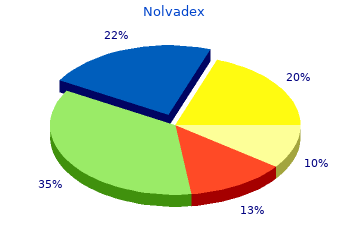
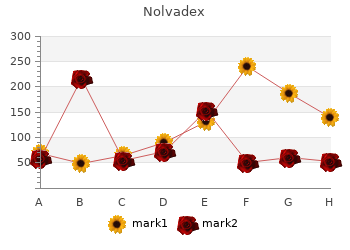
Their findings contradicted the assump- can often be accompanied by psychotic symptoms 10 mg nolvadex with mastercard. Over tion that childhood-onset schizophrenia is characterized the past several decades, the prevalence of mood disorders only by negative symptoms, because a differentiation be- appears to have been increasing (69). Although information tween premorbid and prodromal signs proved to be arbi- on the epidemiology of psychotic depression in children is trary. The psychotic symptoms 1889, the onset and course of schizophrenia relied heavily usually are mood congruent, but at times they can be quite on first admission data and on the subsequent course of the like those seen in childhood schizophrenia (20,70–72). Sometimes, the used as premorbid characteristics (57). In an attempt sys- negative symptoms of schizophrenia in children can be mis- tematically to account for the age and gender distribution taken for those of depression. However, it has been shown of the true onset and the symptoms and pattern of the early that children with schizophrenia have poorer premorbid ad- and later course, Hafner et al. This instrument allows an objective, reliable, der (50). It is therefore prudent to make only a tentative and valid assessment of the symptoms, psychological im- diagnosis at the outset that must be confirmed longitudi- pairments, demographic and social characteristics, and the nally. Careful follow-up of psychotic patients is needed to referring points in time of the early course of psychosis. This issue can be compounded, Their findings suggested that the IRAOS provides informa- however, if the symptoms resolve with antipsychotic medi- tion on the earliest course of the disease and enables them cations. It becomes unclear whether the child improves be- to separate premorbid characteristics, possibly the most cause of treatment or spontaneous remission. Approxi- powerful predictors of the later course and outcome, from mately one-half of adolescents with bipolar disorder may 618 Neuropsychopharmacology: The Fifth Generation of Progress be originally diagnosed as having schizophrenia (20,70). Brief Reactive Psychosis Therefore, it is extremely important that longitudinal reas- Occasionally, children and adolescents suddenly develop sessment is needed to ensure accuracy of the diagnosis. De- psychotic symptoms that can last from a few hours or days. However, the op- acts of violence or destruction, or physical or sexual abuse. These youngsters may suddenly be- rule of thumb is first to rule out mood disorder in a child come disorganized, confused, agitated, or withdrawn. At or adolescent before the diagnosis of schizophrenia is more times, their speech becomes nonsensical and incomprehen- strongly considered. They may also experience delusions and hallucina- Even though there is an overlap of the quality of psy- tions. As clinicians, it is important that we ascertain chron- Children who experience acute anxiety or who have a history ologically what came first, that is, a change in mood and of maltreatment, abuse or neglect report significantly higher then the onset of delusions or hallucinations, or a distur- rates of psychotic symptoms when compared with controls bance in thought followed by a change in mood. Several studies have documented psychotic-like symp- ple, the child who first starts to have 'strange thoughts' toms in children with posttraumatic stress disorder. In such and to hear voices over time becomes puzzled, fearful, dis- instances, the psychotic symptoms actually represent intru- traught, and depressed. This is quite different from the child sive thoughts or worries regarding the traumatic event (73, who first starts to lose interest in activities, to feel irritable 76,77). Mental status examination usually reveals the lack or depressed, to not want to play with friends, and who of a formal thought disorder, and the psychotic-like symp- demonstrates neurovegetative symptoms, such as a decrease toms are more akin to derealization or depersonalization, as is often observed in traumatized children. Furthermore, in appetite, sleep disturbance, and lethargy. Subsequently, there is often a qualitative difference in the way children the child starts to think he is a bad and evil person and with anxiety disorders and those with childhood-onset then hears a voice that tells him he is a bad boy and that schizophrenia relate. The former have better-developed rela- he should kill himself. The phenomenology in this instance tionship and prosocial skills compared with the socially iso- is quite different. However, it is not always this clear, and lated, awkward, and odd behaviors of a child with schizo- there is a high rate of misdiagnosis in both directions (72, phrenia. An identifiable traumatic event, abuse, or neglect 73). This is particu- Organic Psychoses larly so if the child has a positive family history of bipolar disorder, psychomotor retardation, rapid onset of symp- Neurologic Conditions toms, mood-congruent psychotic symptoms, or pharmaco- Seizure Disorder logically induced mania or hypomania. The characteristics Children with seizure disorders can experience hallucinations of the delusions and hallucinations are often mood con- as part of the seizure activity. Complex partial seizures, espe- gruent (expansiveness, grandiosity, and euphoria).
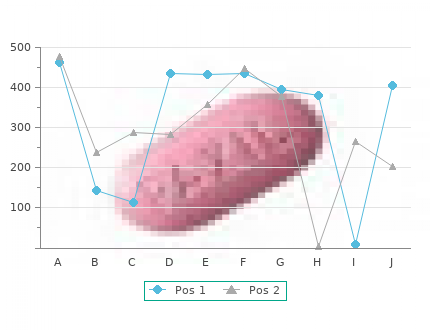
Transmission of hepatitis C virus order on Chlamydia trachomatis and Neisseria gonorrhoeae test perfor- between spouses: the important role of exposure duration order 20 mg nolvadex with amex. J Pediatr Adolesc Gynecol Gastroenterol 1996;91:2087–90. Absence of hepatitis C virus transmission in a prospective cohort of heterosexual serodiscordant couples. Lack of evidence of sexual trans-Lack of evidence of sexual trans- 2003;139:994–1000. Scabies: molecular per- prospective follow-up study. Deaths associated with ivermectin treatment of women. Crusted scabies: clinical and prevalence of hepatitis C virus infection among sexually active non- immunological fndings in seventy-eight patients and a review of the intravenous drug-using adults, San Francisco, 1997–2000. Hepatitis C virus among factors associated with follow-up care. Am J Obstet Gynecol self declared non-injecting sexual partners of injecting drug users. Unsafe sex and increased sexual HIV transmission: quantifying the per-act risk for HIV on the incidence of hepatitis C virus infection among HIV-infected men basis of choice of partner, sex act, and condom use. Sex Transm Dis who have sex with men: the Swiss HIV Cohort Study. Increase in HCV inci- HIV seroconversion in health care workers after percutaneous exposure. HIV postexposure prophylaxis hepatitis C infections in HIV positive homosexual men: is sexual trans- use among Ontario female adolescent sexual assault victims: a prospec- mission feeding the increase? Postexposure prophylaxis C virus in HIV-positive men who have sex with men linked to high-risk for HIV in children and adolescents after sexual assault: a prospec- sexual behaviours. Evidence of a large, international HIV post-exposure prophylaxis for sexual assault survivors. With peak onset at 18-25 years, schizophrenia causes loss of productivity and high medical and social services costs. The suffering of patients with schizophrenia and their families is usually great. Some fortunate individuals manage relatively uninterrupted lives. However, sustained recovery maintained 5 years after the initial episode is only 14% (Robinson et al, 2004). It is likely this name will change in the life of the reader. Schizophrenia is diagnosed (at the moment) by the presence of hallucinations, delusions and formal thought disorder. This is like diagnosing heart disease only at the time of myocardial infarction. Recently, schizophrenia has been conceptualized in four phases. By the time hallucinations and delusions appear, brain changes have occurred; early detection and prevention has become an area of research interest (Insel, 2010). In 1893, Emile Kraepelin (German) drew a distinction between “manic depressive insanity” (bipolar disorder) and “dementia praecox” (meaning dementia of the young; now called schizophrenia). Bleuler believed that formal thought disorder (FTD) in which the patient slips off one track of thought onto another is the primary/defining feature of schizophrenia, rather than the more obvious positive symptoms of hallucinations and delusions. An early categorization divided the symptoms into two groups: “positive” and “negative” (Andreasen et al, 1982). The positive symptoms (phenomena which are in addition to normal experience), are the remarkable features of the acute/psychotic phase, that is, hallucinations, delusions and FTD. The negative symptoms (Andreasen et al, 1982; loss of personality features and abilities) are the most troublesome symptoms of the chronic phase of schizophrenia. The DSM-5 sub-classification is as follows: 1) Affect impairment (flattening or blunting) - diminished emotional expression, with reduced expression of emotion in the face, speech and bodily movements, 2) Anhedonia - reduced ability to experience pleasure, reduced interpersonal skills, 3) Asociality – apparent lack of interest in social interaction, 4) Avolition (apathy) - reduced self-initiated purposeful activities, 5) Alogia – diminished speech output (this is another view of poverty of speech, discussed in Chapter 6). While the negative symptoms are regarded as the predominant feature of the chronic phase, they may be detected as early as the first psychotic episode. Some researchers found that certain symptoms did not easily fit into the two category model, and developed a three category/factor model (Bilder et al, 1985). Along with the positive and negative symptom groups, a third group was designated “disorganisation” - this included some thought disorder, bizarre behaviour, impaired attention and some cognitive dysfunction.
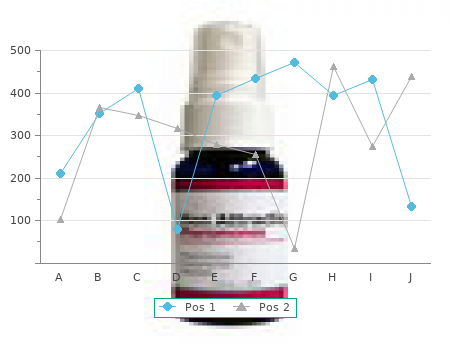
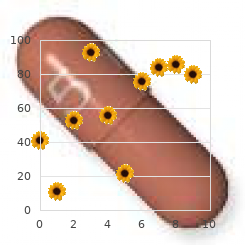
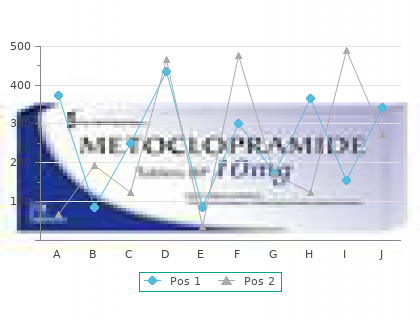
Search for marker of neuronal integrity buy nolvadex 20mg fast delivery, may be decreased specifically the causes of schizophrenia (vol 4). Berlin: and regionally in schizophrenia secondary to decreases in Springer-Verlag, 1999:251–260. Subanesthetic effects of the noncompetitive NMDA antagonist, ketamine, in humans: psychotomimetic, perceptual, cognitive, and neuroendocrine re- sponses. NMDA recep- tor function and human cognition: the effects of ketamine Converging evidence indicates that abnormalities of gluta- in healthy volunteers. Neuropsychopharmacology 1996;14: matergic neurotransmission occur in specific brain regions 301–307. Recent advances in the phencyclidine D-aspartate neurotransmission. D-Serine as a ketamine stimulate psychosis in schizophrenia. Neuropsycho- neuromodulator: regional and developmental localizations in pharmacology 1995;13:9–19. D-Serine, an endogenous in neuroleptic-free schizophrenics. Neuropsychopharmacology synaptic modulator: localization to astrocytes and glutamate- 1997;17:141–150. NMDAR1 subunit in Chinese hamster ovary cells fails to pro- 9. Synaptic develop- duce a functional N-methyl-D-aspartate receptor. Neurosc Lett ment of the cerebral cortex: implications for learning, memory, 1994;173:189–192. Cortical pruning and the development of schizo- human NMDA homomeric NMDAR1 receptors expressed in phrenia. Widespread cerebral tate receptors: different subunit requirements for binding of grey matter volume deficits in schizophrenia. Arch Gen Psychia- glutamate antagonists, glycine antagonists, and channel-block- try 1992;49:195–205. Excitatory amino acids and synaptic ence 1992;256:1217–1220. Divalent ion per- N-methyl-D-aspartate receptor by phencyclidine-like drugs is meability of AMPA receptor channels is dominated by the ed- influenced by alternative splicing. Neurosci Lett 1995;190: ited form of a single subunit. Interactions be- subunit mRNAs determines gating and Ca2 permeability of tween ifenprodil and the NR2B subunit of the N-methyl-D- AMPA receptors in principal neurons and interneurons in rat aspartate receptor. Ca2 permeability ization of alternative mRNA forms for the rat metabotropic of KA-AMPA-gated glutamate receptor channels depends on glutamate receptors mGluR7 and mGluR8. Metabotropic glutamate receptors: synaptic trans- ability of AMPA-type glutamate receptor channels in neocortical mission, modulation, and plasticity. Neuron 1994;13: neurons caused by differential GluR-B subunit expression. Pharmacological charac- editing, splice variation, and subunit composition. J Neurosci terization of metabotropic glutamate receptors in several types 1997;17:58–69. Developmental and re- distinct pharmacological profile. Mol Pharmacol 1997;51: gional expression pattern of a novel NMDA receptor-like sub- 119–125. Novel functions for subtypes of metabotropic 6509–6520. Signal transduction and pharmacologi- terization of NR3A: a developmentally regulated member of a cal characteristics of a metabotropic glutamate receptor, novel class of the ionotropic glutamate receptor family. Splice variants of the pharmacological characterization of the metabotropic glutamate N-methyl-D-aspartate receptor NR1 identify domains involved receptor type 5 splice variants: comparison with mGluR1. Molecular diversity of glutamate receptors and of two alternatively spliced forms of a metabotropic glutamate implications for brain function. Serine racemase: a glial calcium release in Xenopus oocytes. Proc Natl Acad SciUSA enzyme synthesizing D-serine to regulate glutamate-N-methyl- 1992;89:10331–10335.
10 of 10 - Review by W. Ortega
Votes: 329 votes
Total customer reviews: 329

